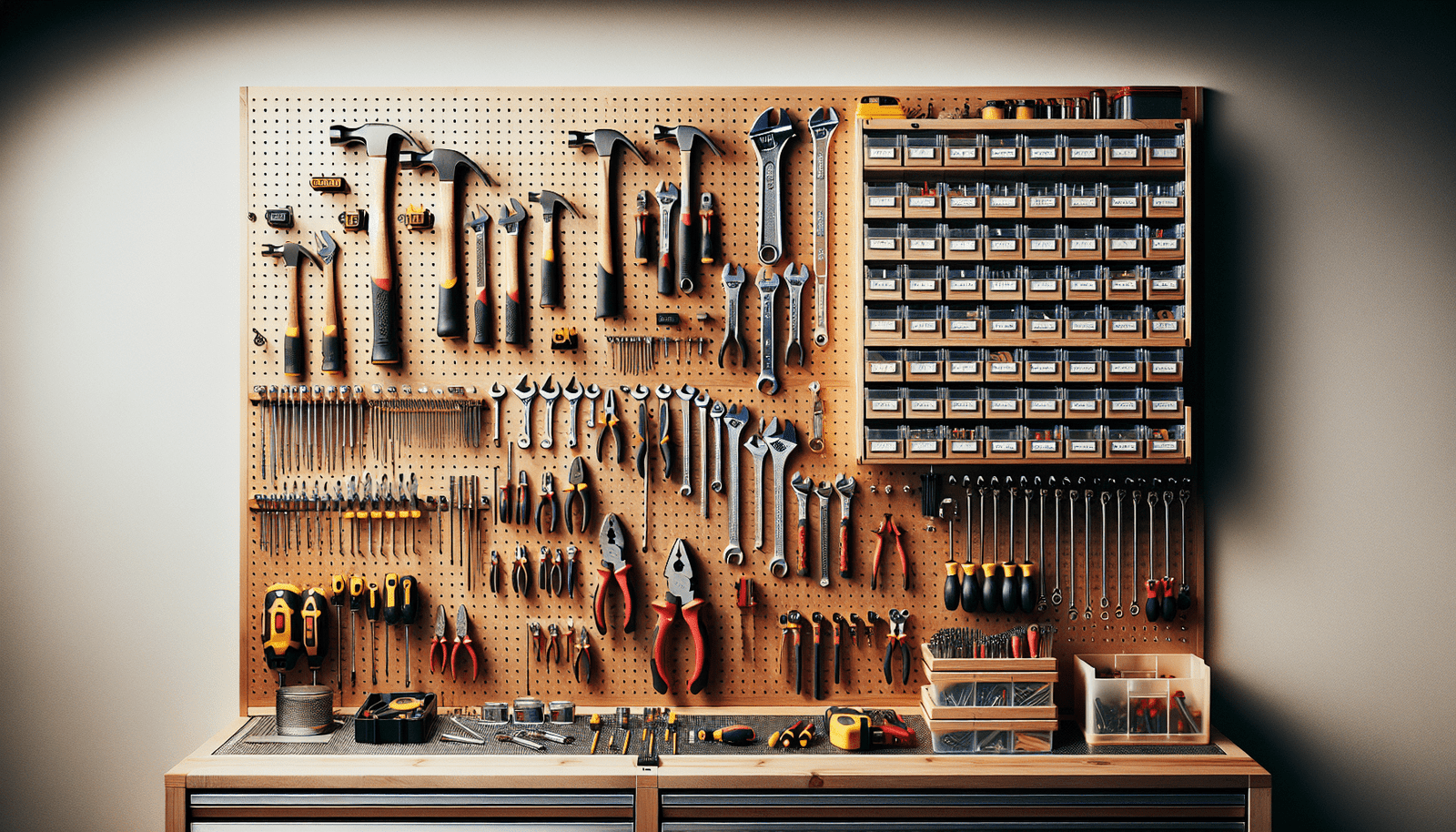A Comprehensive Guide to Tool Collection Organization Systems: How often have you found yourself in the middle of a project only to spend more time searching for the right tool than actually using it? It is a common frustration, often exacerbated by disorganized tool collections. Yet, tackling the chaos can seem more daunting than the projects those tools are meant to complete. Organized tool collections not only save time but can also enhance the efficiency of any task, whether it’s a weekend DIY project or professional repair work. In this comprehensive guide, we will delve into various organization systems for tool collections, offering insights and practical strategies you can adapt to suit your needs.

Table of Contents
The Evolution of Tool Organization
Understanding the historical context of tool organization can offer valuable insights into why and how these systems have evolved. Historically, craftsmen and artisans stored their tools in simple wooden boxes, an approach sufficient for the limited variety of tools at the time. With the industrial revolution came an explosion of tool types, necessitating more sophisticated organizational strategies.
From Toolboxes to Workshops
The shift from rudimentary toolboxes to dedicated workshops marked a significant evolution in tool organization. As the number and variety of tools increased, the need for dedicated storage spaces became evident. Early 20th-century workshops were often cluttered, reflecting the burgeoning tool industries’ growing pains. With the advent of mass production, craftsmen needed new ways to store and access a wider array of tools efficiently.
Modern Organizational Systems
Today’s tool organization systems offer unparalleled efficiency and accessibility, catering to both professional tradespeople and hobbyists. From pegboards and modular storage systems to mobile tool chests and digital inventory apps, modern solutions are as varied as the tools themselves.
Key Concepts in Tool Organization
To devise a tool storage solution that suits your needs, it’s crucial to understand some basic principles. These include the types of tools you own, the space available, and how often each tool is used.
Categorization
Grouping tools based on their function or frequency of use is foundational to any organization system. Regularly used tools should be easily accessible, while specialized or seldom-used tools can be stored out of immediate reach.
Space Utilization
Maximizing limited storage space is essential, especially in compact environments. Consider vertical storage solutions such as pegboards or wall-mounted racks, which free up valuable floor space and provide easy access to frequently used tools.
Maintenance and Inventory
Regular maintenance and a clear inventory system prevent tool degradation and loss. By routinely cleaning and inspecting tools, you can prolong their lifespan. Keeping an updated inventory helps in promptly identifying any missing items.

Step-by-Step Guide to Organizing Your Tool Collection
Organizing tools may seem straightforward, but applying a systematic approach ensures long-term efficiency and ease of access.
Step 1: Conduct a Tool Audit
Begin by categorizing and inventorying all the tools you own. Use a spreadsheet or tool organization app to list each item, its condition, and its usage frequency. This will provide a clear overview and highlight redundant or damaged tools that can be discarded or replaced.
Step 2: Design Your Storage Layout
Analyze the space available and design a layout that accommodates your assortment of tools while leaving room for future acquisitions. Consider the workflow of your projects to ensure that the placement of tools minimizes unnecessary movements.
Step 3: Select Appropriate Storage Solutions
Choose storage solutions that align with your needs. Here’s an overview of some common options:
- Pegboards: Ideal for hand tools and small equipment, pegboards provide flexibility and visibility.
- Drawer Units: These protect tools from dust while offering compartmentalized storage.
- Mobile Carts: Perfect for projects that require moving from space to space, these carts allow the entire tool collection to be transported with ease.
- Shelving Systems: Suitable for storing larger power tools and toolboxes, especially in spaces like garages or workshops.
Step 4: Implement Organization
Arrange your tools according to your plan, ensuring that all items are within reach and orderly. This is where considerations of categorization come into play — group tools not just by function, but by project type, if applicable.
Step 5: Regular Maintenance and Reevaluation
Regularly clean, inspect, and update your inventory. Seasonal reevaluations can help you adapt to any changes, whether due to acquisitions of new tools or changing project needs.
Visual Aids and Digital Tools
Visual organization tools and digital apps can revolutionize tool management for both professionals and hobbyists.
Interactive Workshops and Infographics
Consider integrating infographics or 3D-planning software to visualize your workshop layout. These tools can simulate different configurations, helping you refine your setup before physical implementation.
Digital Inventory Systems
Tool management apps, such as Sortly or My Stuff, can streamline inventory processes and aid in tracking tool usage and maintenance schedules.

Case Studies: Real-World Examples of Effective Tool Organization
Exploring how others have successfully organized their tools can offer both inspiration and practical advice.
John’s Garage Transformation
John, a professional contractor, faced a common dilemma: too many tools, not enough organization. By grouping tools by trade (electrical, plumbing, carpentry), designing dedicated zones (workbench, storage, repair), and employing mobile carts for frequently used items, he transformed a chaotic space into an efficient workshop.
Sarah’s Creative Corner
As an artist and DIY enthusiast, Sarah struggled with finding space for her diverse mix of tools and materials. By employing wall-mounted storage and repurposing vintage cabinets for storage, she cultivated a neat, creative space that could adapt to her dynamic projects.
Future Trends in Tool Organization
The future of tool organization is shaped by technological advancements and evolving workspaces.
Smart Storage Solutions
Emerging technologies, such as IoT-enabled toolboxes and RFID-tagged tools, are paving the way for smarter tool organization. These technologies provide real-time tracking and can automatically update inventories, ensuring that tools are always accounted for.
Modular and Adaptive Systems
As workspaces become more flexible, modular storage solutions that can be easily reconfigured will become increasingly popular. These systems cater to the bespoke needs of individual projects, adapting alongside the user’s requirements.
Sustainable Organization Practices
Sustainability is gaining prominence, prompting a shift towards eco-friendly materials and practices in tool storage solutions. By opting for renewable materials and maximizing existing spaces without additional consumption, tool organization can play its part in larger sustainability efforts.

Conclusion
Tool organization is more than just tidying up a workspace; it is about creating a system that enhances usability, accessibility, and efficiency. Whether you’re a professional or a hobbyist, embracing a tailored organization approach can transform how you use your tools. By understanding the fundamentals and future trajectories of tool organization, you can create a system that not only suits your current needs but grows with you — ensuring that you spend less time searching and more time creating.

